41+ Sample Rotation Schedule
-
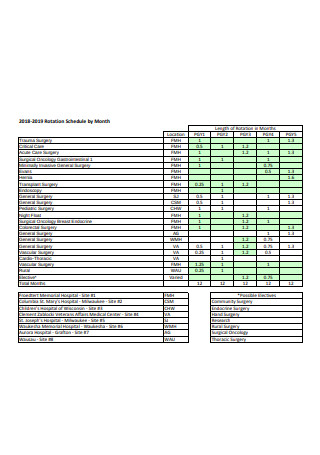
Rotation Schedule by Month
download now -
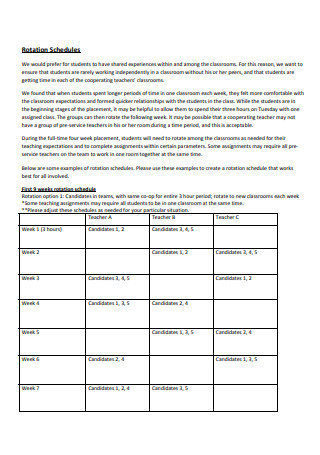
Rotation Schedule
download now -
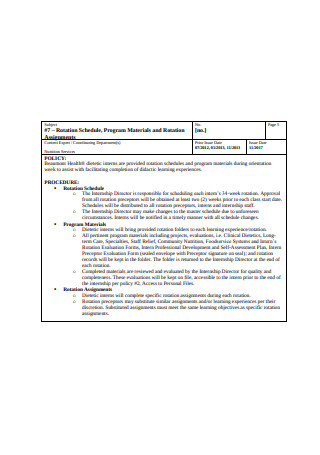
Rotation Schedule Sample
download now -
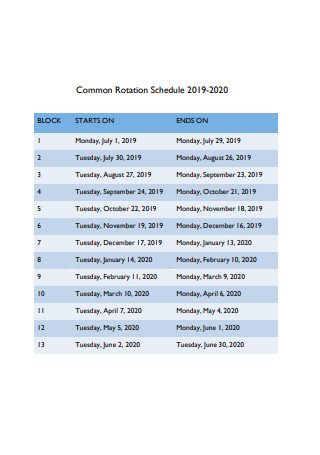
Common Rotation Schedule
download now -
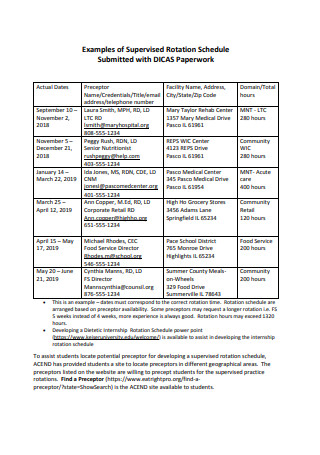
Rotation Work Schedule
download now -
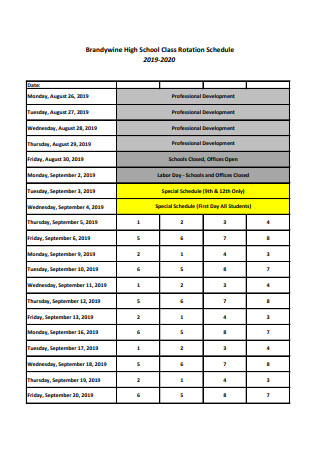
High School Class Rotation Schedule
download now -

Supervisory Board Rotation Schedule
download now -

Rotation schedule Format
download now -
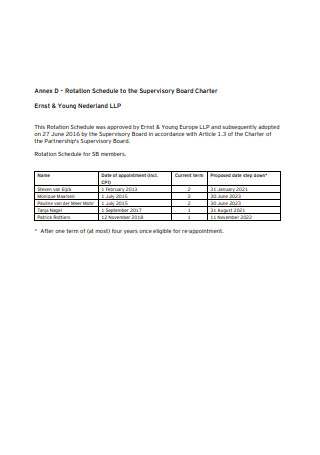
Rotation Schedule to the Supervisory Board Charter
download now -
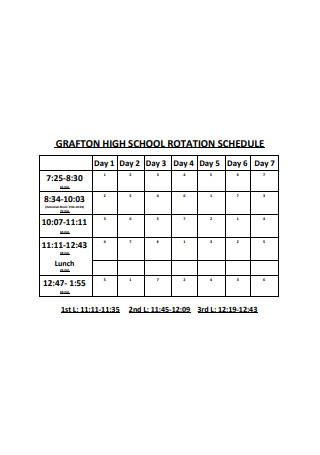
High School Rotation Schedule Format
download now -

Sample Resident Rotation Schedule
download now -
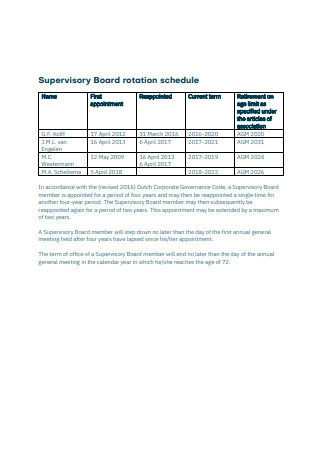
Supervisory Board Rotation Schedule Example
download now -
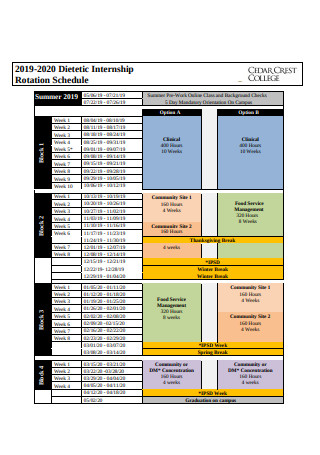
Internship Rotation Schedule
download now -
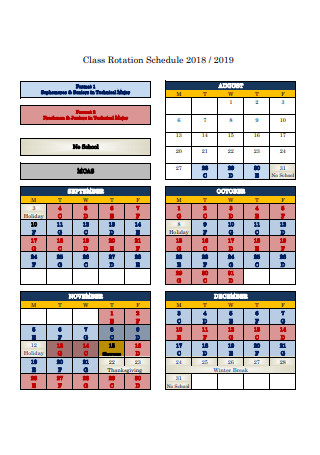
Class Rotation Schedule
download now -

Field Day Rotation Schedule
download now -
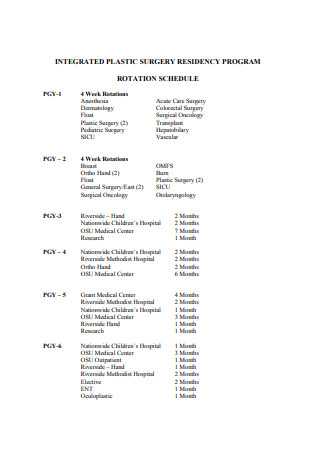
Basic Rotation Schedule
download now -
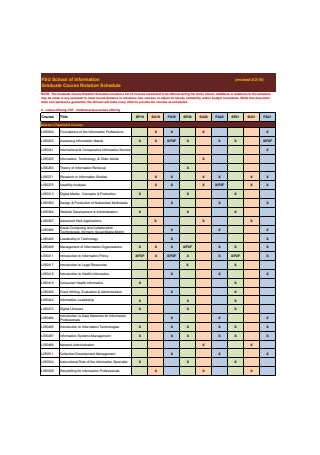
Graduate Course Rotation Schedule
download now -
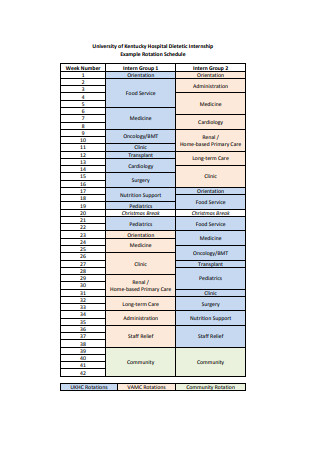
Rotation Schedule Example
download now -
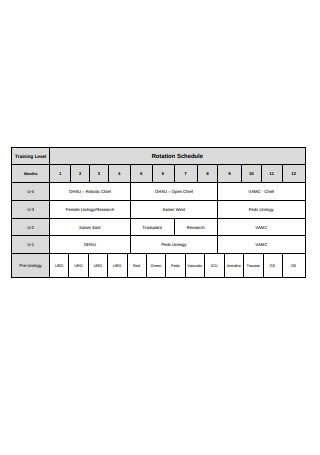
Simple Rotation Schedule
download now -
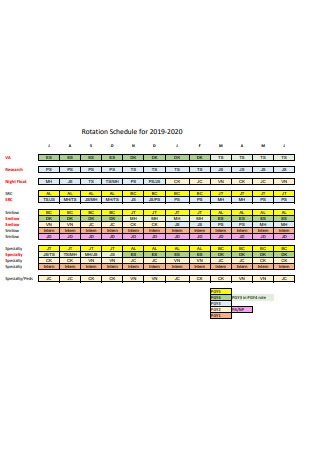
Rotation Schedule for 2019-2020
download now -
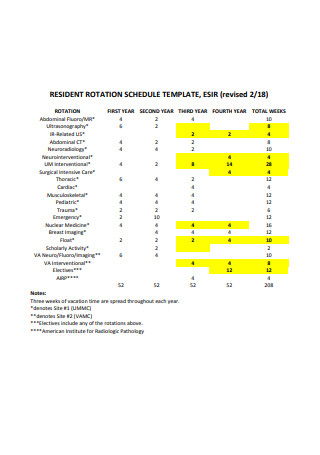
Resident Rotation Schedule Format
download now -
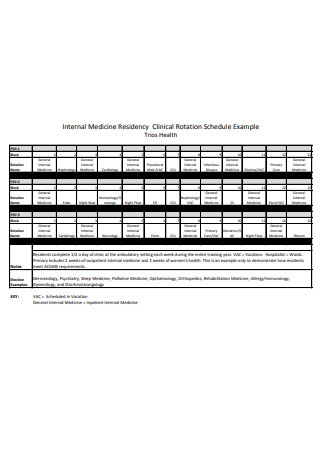
Clinical Rotation Schedule Example
download now -
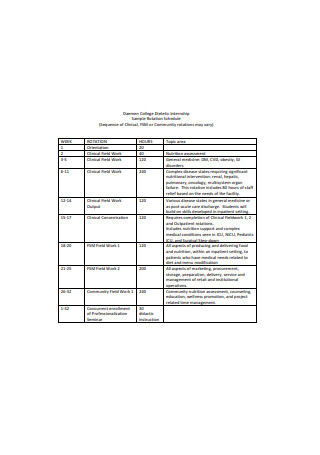
Sample Rotation Schedule Format
download now -
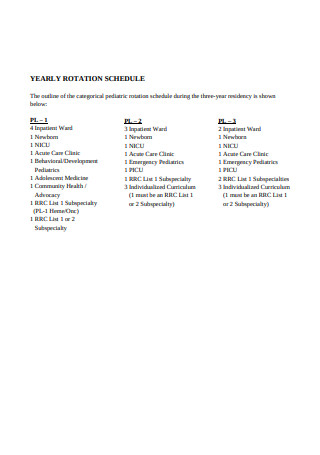
Yearly Rotation Schedule
download now -
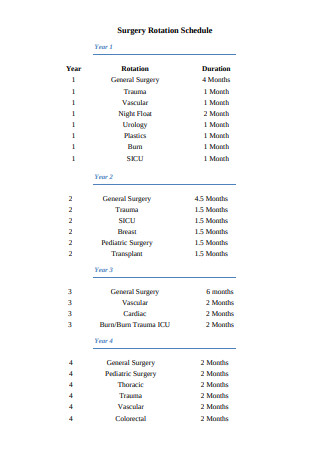
Surgery Rotation Schedule
download now -
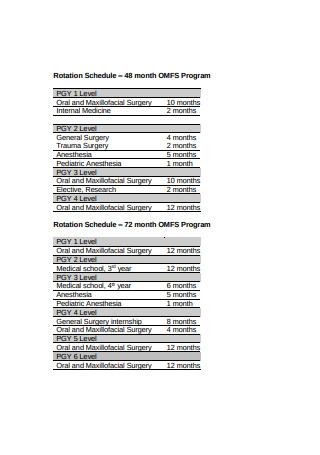
Standard Rotation Schedule
download now -
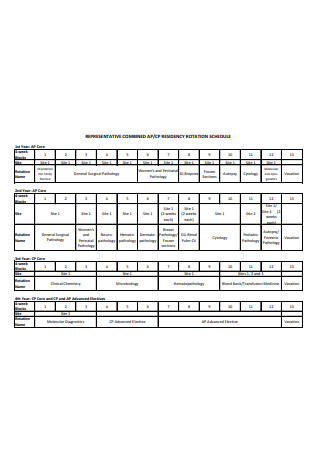
Residency Rotation Schedule
download now -
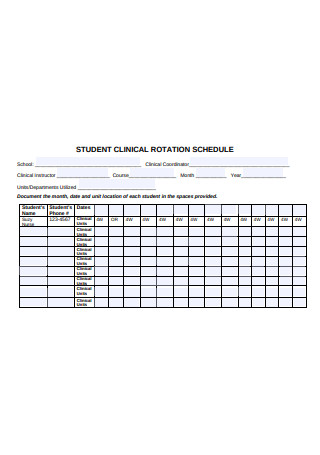
Student Clinic Rotation Schedule Format
download now -
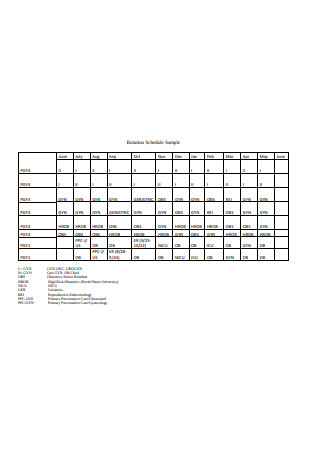
Basic Rotation Schedule Sample
download now -

Class Rotation Schedule Calendar
download now -
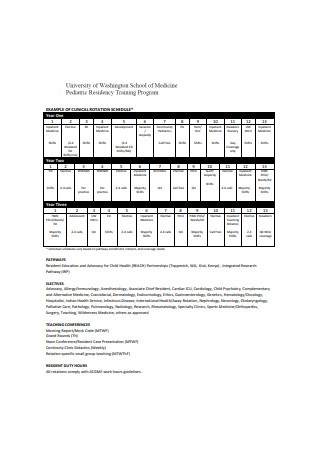
Clinical Rotation Schedule Format
download now -
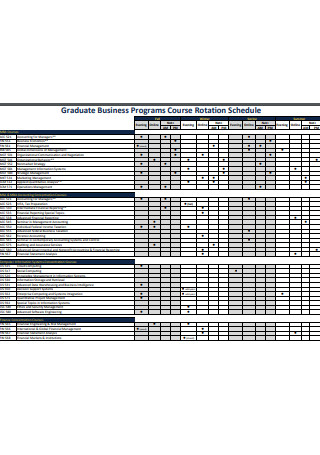
Graduate Business Programs Course Rotation Schedule
download now -
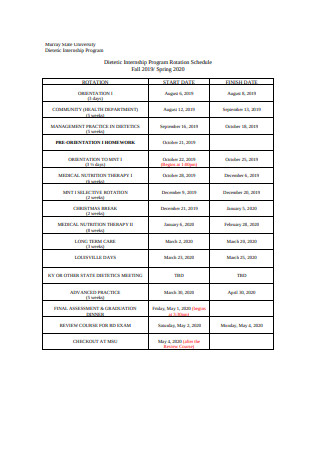
Internship Program Rotation Schedule
download now -
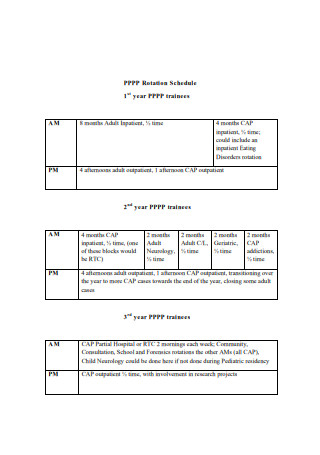
Rotation Schedule Format
download now -
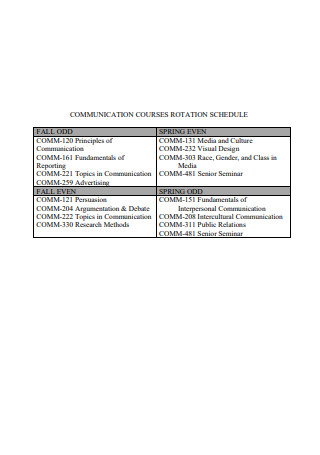
Communication Courses Rotation Schedule
download now -
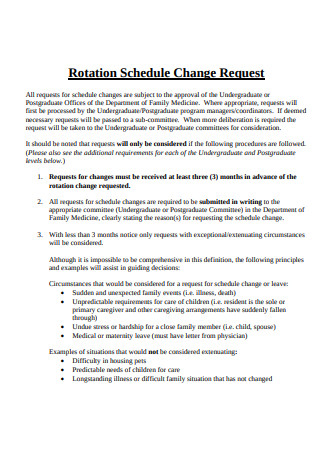
Rotation Schedule Change Request Format
download now -
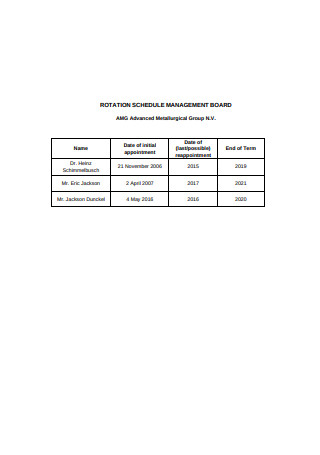
Rotation Schedule Management Board
download now -

Sample Class Rotation Schedule
download now -

School Teacher Rotation Schedule
download now -
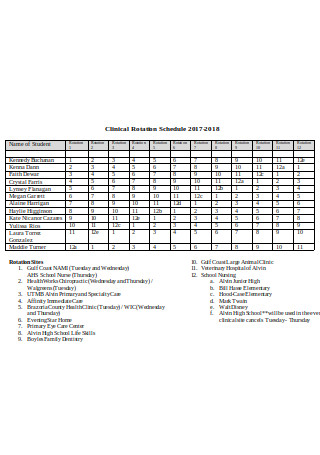
Clinical Rotation Schedule Sample
download now -
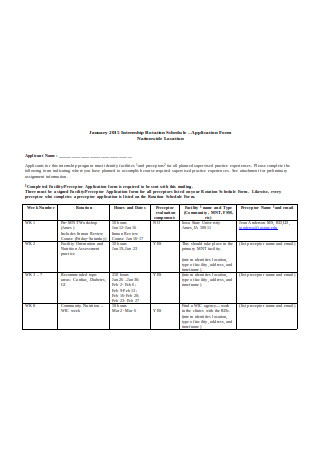
Sample Internship Rotation Schedule
download now -
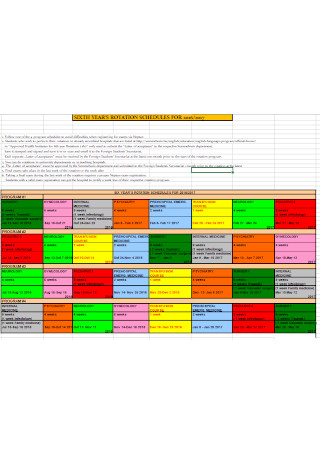
Year Rotation Schedule Template
download now
However, the fast-paced world we’re living in demands a lot from businesses and other corporate entities. Thus, prompting business owners or managers to extend their business hours to keep up with the changes. This may also call for adjustments in the work schedules of the employees. If you are planning to set-up a rotational schedule in your company, we won’t let you undergo the process blindfolded. Read this article and gain valuable insights about the rotating or rotation schedule.
What is a Rotation Schedule?
As the name suggests, a rotating schedule is a scheduling practice wherein the employees don’t follow a fixed time as to when are they going to report to work. With this type of shift, employees work at particular working hours for a specific period only—given that the schedule changes on a weekly, bi-weekly, or monthly basis. Some companies implement this scheme to cover different shifts in a business operation. However, note that the nature of the work influences the type of scheduling practice a company sticks to. For example, if a business operates for eight hours only, then having an ever-changing schedule may not be necessary. In implementing a rotating shift schedule, employers should see to it that their employees have a full understanding of the arrangement. For this reason, employers should create a rotation schedule that will indicate the different shifts each employee should cover for a specific period.
Traditionally, full-time employees report to work for 40 hours per week. However, that is not always the case. The Fair Labor Standards Act (FLSA) in the United States does not lay out provisions as to what is considered as a full-time employee in the country. Therefore, the required number of hours for an employee to work on a daily basis is of the employer’s discretion. Data from the United States’ Bureau of Labor Statistics revealed that on average, employees who are under a private non-farm payroll work for 34.4 hours a week. Working shifts vary from employer to employer. While some carry out their duties during traditional business hours which is 8:00 am to 5:00 pm, other employers mandate their employees to start their work at nighttime.

Advantages of Rotating Shift Schedule
Consistency is good, but not at all times. There are instances wherein breaking the norm or tradition is beneficial to an individual or an organization. While some stick to the traditional 9:00 am – 5:00 pm workweek, other employers opt for an alternative and more flexible work schedule. Moreover, there are also companies that implement a rotating shift schedule instead of a fixed one due to various factors. If you are managing a company, here are five reasons why you should make use of a rotational scheduling system in your organization.
How to Create a Rotation Schedule
Statistics show that in the United States, there were 131.99 million employees who work full-time as of October 2019. However, it is not certain whether these employees have a fixed schedule or a rotational shift schedule in their respective workplaces. If you are managing a company that operates for more than eight hours, it is a must to have an adequate number of staff to cover various shifts. Now that you know the advantages of setting up a rotating schedule in a company, are you planning to implement the scheduling practice in your workplace? If so, then start creating a rotation schedule for your employees. Here’s how:
Step 1: Specify the Type of Rotating Shift Schedule
There are various types of shift rotation systems you can implement in your company—all-shift rotation, two-shift rotation, and 12-hour shift to name a few. Choose the one which will work best for your employees and the company as a whole. Before selecting a rotating shift schedule to make use of, though, it will be beneficial to solicit ideas from your staff regarding the matter. It will be impossible to generate identical responses from all of your employees. Nevertheless, knowing their side will help you reach a general consencus and eventually, implement a scheduling system which will work best for everyone.
Step 2: Download a Template
Coming up with a comprehensive and well laid out schedule from scratch can take much of your time. And as an employer, you wouldn’t want another paperwork to add up to the heap of tasks you have at hand, right? So, save yourself from the hassle of creating a rotation schedule from scratch by downloading a ready-made and professionally crafted rotation schedule template. With a template at your disposal, all you have to do is edit the text inside the cells to best suit your needs.
Step 3: Input Details
Supposing that you have already downloaded a template in your digital device. Now, the next thing you will do is plan out and arrange the schedule for each of your employees, then input the information on the template. Start by listing down employee information on the first column—it may include their full name, job title, and/or employee number. After this, make sure to specify in your document the various shifts they have to cover. You may use a color-coding system to make the schedule easier to understand. Assigning a color for each shift will help employees easily identify if they will work during the day shift, mid-shift, night shift, etc.
Step 4: Indicate Rest Days
Results from a recent Gallup study revealed that 23% of workers claimed they feel burned out at work very often or at all times, while 44% said they feel the same at times. Taking this information into account, we can surmise that one of the issues a company is facing nowadays is employee burnout crisis. Providing rest days to the workers can prevent—or at the very least—lessen employee burnout. In your rotation schedule, you should not only include the working days of your employees but also their rest days. It is essential that they are well-aware of this information so they will report to work accordingly.
Step 5: Disseminate the Information
Unlike a fixed schedule, rotating schedule changes over the course of a worker’s employment period. Therefore, it is your responsibility as an employer to update your employees about the upcoming working schedule the company will follow. It would also greatly help if you use an online platform to disseminate the information to your employees. When you have a digital copy of the file, it would be more efficient to make necessary changes and at the same time, inform the employees about it. Moreover, you should bear in mind to give every person involved access to the file or document.
The Dos and Don’ts of a Rotation Schedule
You have to consider a lot of factors before implementing a rotating schedule in your company (e.g., health condition and availability of employees). Apart from that, you should also examine if there is really a need for your company to follow this type of work shift. And if you think that a rotation schedule will be beneficial to your organization, make sure to follow these tips provided below so you can effectively plot out a rotation schedule for your employees. The dos and don’ts outlined in this article will help you achieve a fool-proof rotational shift schedule.
Dos
1. Do make employees respond on time.
Time is money. In a business setting, time wasted equates to wasted money. For this reason, business owners see to it that their employees are productive and efficient in carrying out their tasks to ensure a smooth-flowing business process. The efficiency of employees starts the minute they report to work. Thus, employers should make sure that their staff reports to work on time on a daily basis regardless of the scheduling scheme their company sticks to. Keep in mind that having the necessary manpower is highly significant in attaining an optimal business process.
2. Do observe fairness in distributing schedules.
As previously mentioned, one of the advantages of a rotating shift schedule is it enables employers to distribute employee expertise and talent to various shifts. Furthermore, this type of arrangement gives beneficial experiences to every employee since they take turns in covering different shifts. However, you can only achieve this when you observe fairness in distributing the schedule. Each employee should have their fair share of desirable and not-so-desirable working hours. Aside from that, you should provide even overtime options and workhours to the workers.
3. Do scrap the paper and schedule on a software.
We are not living in an era when traditional ways of doing things are the only means to accomplish different tasks. The rise of technology has given businesses more efficient ways to handle tasks such as scheduling. So, what are you doing with all those papers? Scrap it and plot a schedule on a software. There are various applications or software made available in both online and offline that you can make use of—choose the one which will make the task hassle-free on your part. Also, see to it that the software has a feature which allows users to share a document or file after creating it.
Don’ts
1. Don’t forget to monitor overtime.
One thing you should take into account when managing employee shifts is overtime. Monitoring the excess amount of time an employee incurred for working is beneficial for both the worker and the employer. This way, employees receive proper compensation while employers can keep track of employee time and regulate overtime work. Aside from that, you should avoid changing shifts quickly to give your employees ample time to adjust.
2. Don’t make your employees report beyond their level of workload.
Implementing a scheduling practice will be more effective when your employees can handle the workload handed out to them. If a particular task is not a part of an employee’s job, then you should avoid giving the responsibility of carrying it out to them. Making the employees report beyond their level of workload might do harm than good to your business. Chances are it will decrease their ability to be more efficient and productive in doing the tasks.
3. Don’t be oblivious of workers’ exhaustion.
In Japan, the work culture was so intense and employee exhaustion have become so prevalent that in the 1970s, they coined the term “karoshi” which literally translates to death by overwork. As stated in an article from Business Insider, a survey found that out of 10 000 Japanese employees, 20% said that they incurred 80 hours of overtime work in one month. In a separate study, the results revealed that more than 50% of employees in Japan felt stressed out in the working environment they are in. You wouldn’t want to face this alarming situation in your workplace, right? So, you have to consider the welfare of your employees before implementing a rotational shift schedule. Also, check them occasionally if there are any signs of sleep deprivation and burnout and make changes to the schedule when necessary.
